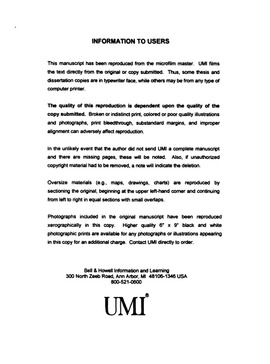| dc.contributor.advisor | Russell, Bruce W., | en_US |
| dc.contributor.author | Hale, William Micah. | en_US |
| dc.date.accessioned | 2013-08-16T12:18:37Z | |
| dc.date.available | 2013-08-16T12:18:37Z | |
| dc.date.issued | 2002 | en_US |
| dc.identifier.uri | https://hdl.handle.net/11244/487 | |
| dc.description.abstract | The use of high performance concrete (HPC) in exterior structures has increased in recent years. Its increased strength and durability make HPC very appealing to the prestressed concrete industry, particularly in bridge girders. Due to its increased strength and durability, HPC can reduce the number of girders, increase bridge spans, decrease bridge depth, and improve bridge durability. The research program investigated the need for air entrainment in HPC and its effect on HPC bridge girders. It is necessary to entrain air in some concrete structures that are subjected to freezing and thawing. Current building codes require varying amounts of entrained air depending on the severity of the exposure. Entrained air voids provide air pockets where water can expand and water pressure can be relieved. Without these voids, continuous freeze-thaw cycles will eventually degrade and damage the concrete. A total air content between four and eight percent is generally considered adequate to provide resistance to the freeze-thaw action. Many researchers suggest that entrained air may not be necessary in HPC because of its low permeability, and because of its inherent unsaturated condition. One of the primary objectives of the research program is to determine whether air entrainment is necessary in HPC. Results from the program show that air entrainment may not be necessary for w/cm less 0.36, and a total air content of four percent may be sufficient for w/cm between 0.36 and 0.50. | en_US |
| dc.format.extent | xvi, 324 leaves : | en_US |
| dc.subject | Air-entrained concrete. | en_US |
| dc.subject | High strength concrete. | en_US |
| dc.subject | Engineering, Civil. | en_US |
| dc.subject | Concrete bridges. | en_US |
| dc.subject | Bridges Design and construction. | en_US |
| dc.title | Investigating the need for and effect of air entrainment in high performance concrete. | en_US |
| dc.type | Thesis | en_US |
| dc.thesis.degree | Ph.D. | en_US |
| dc.thesis.degreeDiscipline | School of Civil Engineering and Environmental Science | en_US |
| dc.note | Adviser: Bruce W. Russell. | en_US |
| dc.note | Source: Dissertation Abstracts International, Volume: 63-05, Section: B, page: 2491. | en_US |
| ou.identifier | (UMI)AAI3054054 | en_US |
| ou.group | College of Engineering::School of Civil Engineering and Environmental Science | |
